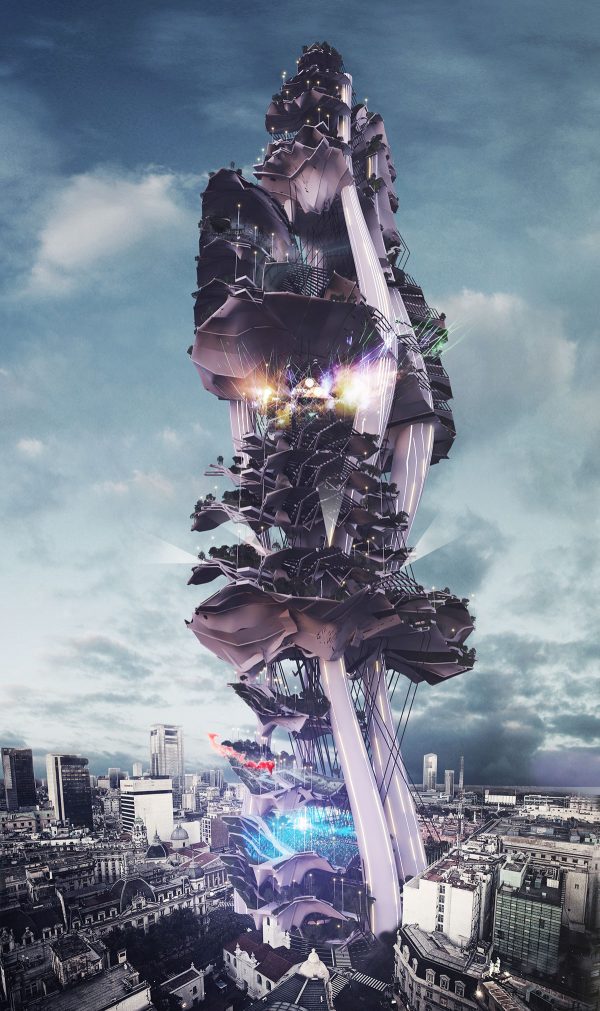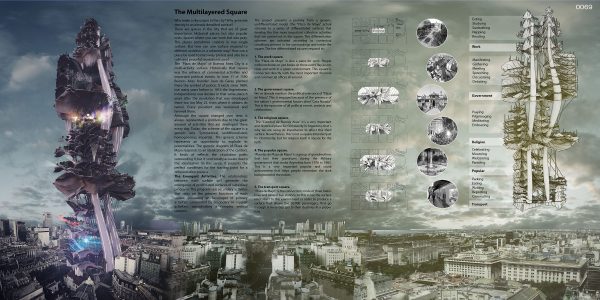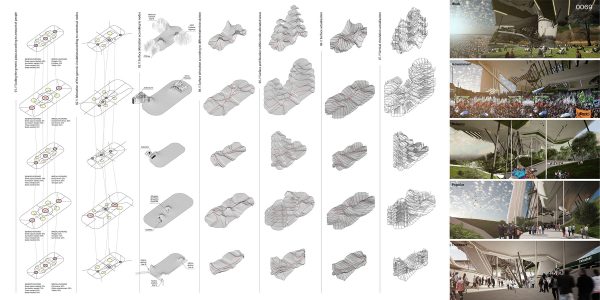Editor’s Choice
2016 Skyscraper Competition
Santiago Hector Raul Miret, Federico Eduardo Menichetti, Melisa Brieva, Gaston Horacio Hermida
Argentina
There are spaces in the city that are of great importance. Historical places, but also popular ones. Spaces where you can work but also pray. This places sometimes coexists in one single surface. But how can one surface respond to different activities in a coherent way? How can a place be used to massively protest and also be a calm and peaceful recreational area?
The “Plaza de Mayo” of Buenos Aires City is a multi-activity surface. Historically that square was the witness of commercial activities and important political events. In 1580 Buenos Aires founder Juan de Garay planted there the symbol of justice. In 1816 the Argentinean Independence was declare in that same place 6 years after the revolution that was developed there too (on May 25, from where it obtains its name). Every president was welcomed and farewell there.
The project presents a journey from a generic, undifferentiated model (the “Plaza de Mayo” actual scheme) to a series of differentiated surfaces that develop the five more important collective activities that are carried out in the square. This differentiation diagrams are activated according to contextual conditions present in the surroundings and inside the square. The five differentiated squares respond to:
- The work square. But the “Plaza de Mayo” is also a place for work. People with notebooks or just books sit there every day just to relax and work in a green environment. This square is connected directly with the most important financial and commercial offices all around.
- The government square. We´ve already mention the political relevance of “Plaza de Mayo”. This is engaged because of the presence of the nation´s governmental house called “Casa Rosada”. This is the epicenter of all political events, protests and celebrations.
- The religious square. The “Catedral de Buenos Aires” it´s a very important and historical place for Christianity in Argentina, that´s why we are using its importance to affect this third surface. Nevertheless, this is not a square intended just for Christianity, but for religion itself. A square for the faith.
- The popular square. “Abuelas de Plaza de Mayo” is a group of grandmothers that lost their grandsons during the Military government that stroke Argentina from 1976 to 1983. This is a very important popular and social achievement that helps people remember the dark background of the nation.
- The transport square. “Plaza de Mayo” is the connectivity node of three metro lines and several bus stations. In this sense the surface must react to this environment in order to produce a surface that allows the 30.000 passengers, that go through it every day, get to their destinies in a proper way.
The Emergent Activities. The relationships between each surface will generate the emergence of proliferated surfaces of subsidiary programs. This programs are secondary activities that relay on the primary functions of each square, producing an Skyscraper of primary activities surrounded by secondary or support activities, consolidating a complex vertical scenario.
All things considered, “The Multilayered Square” is an active multi-surface that responds to a variety of different programs and activities not only of the Plaza de Mayo specifically, but also of squares all around the world. We can consider “The Yokohama Port Terminal” as a transport square, or the “Mecca” as the religious square by excellence. But also we can find governmental squares such as Piazza del Campidoglio, or popular ones like Piazza Navona. In this sense, “The Multilayered Square” does not pretend to replicate them, but to differentiate the generic scheme of the square producing subsidiary and new activities as an emergence of the project´s process.

















